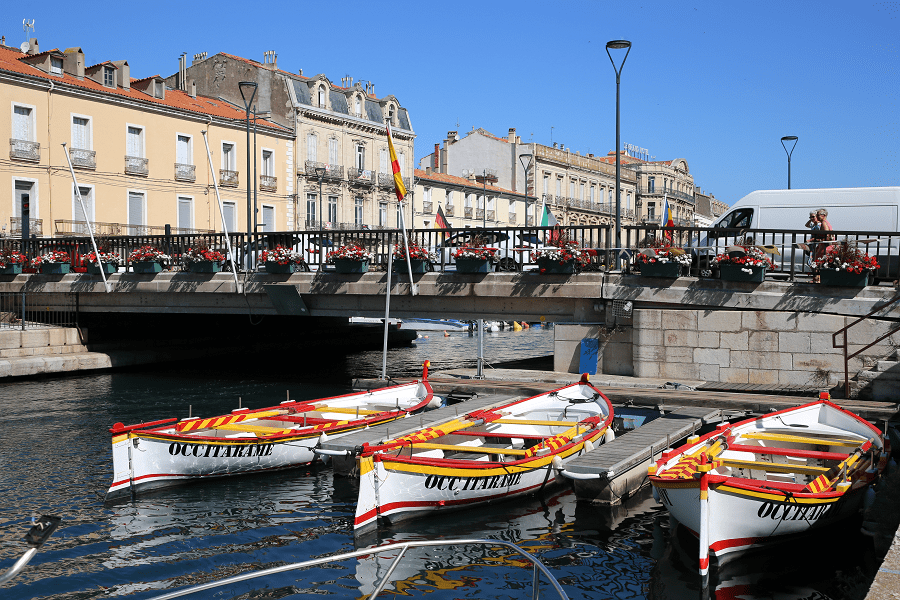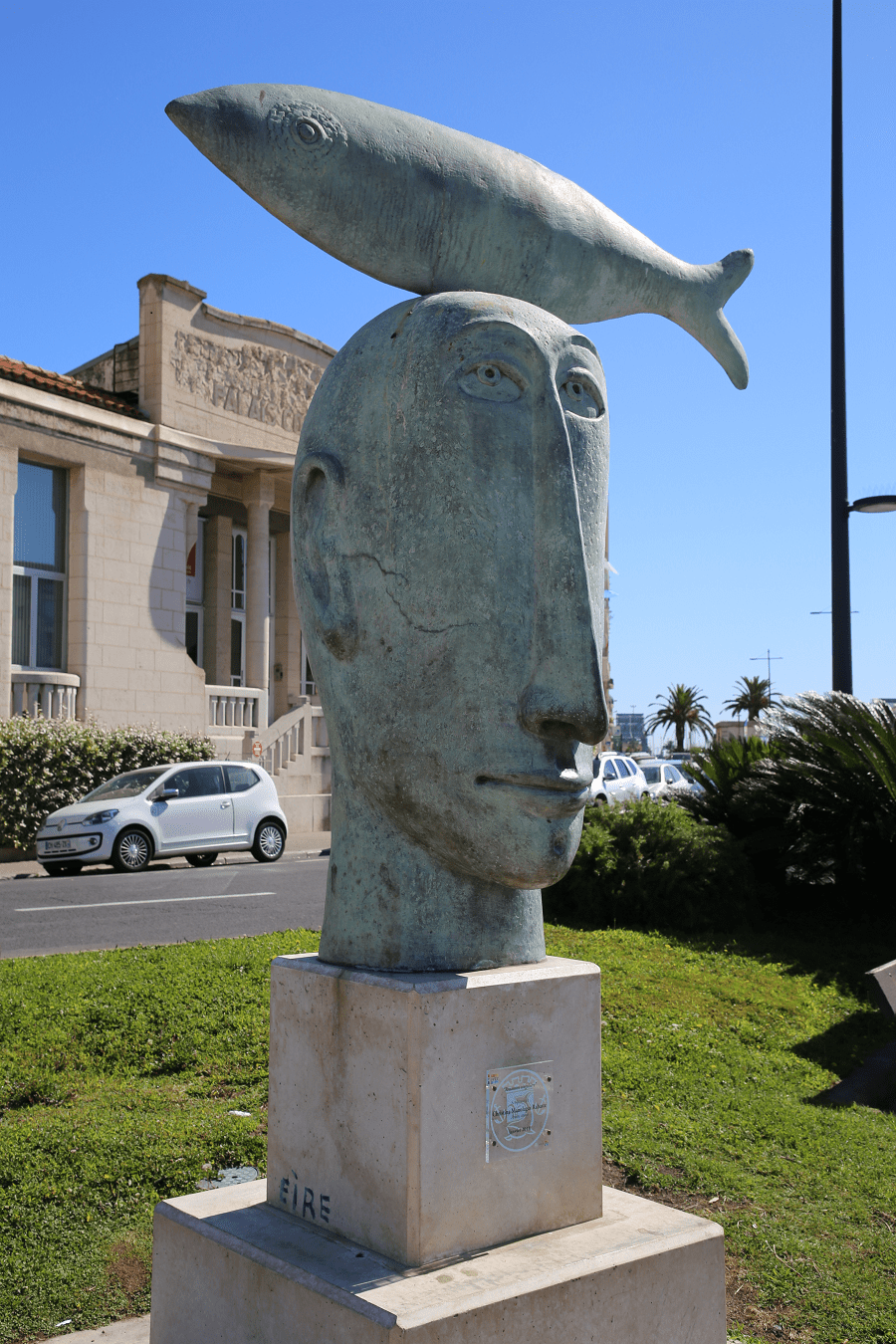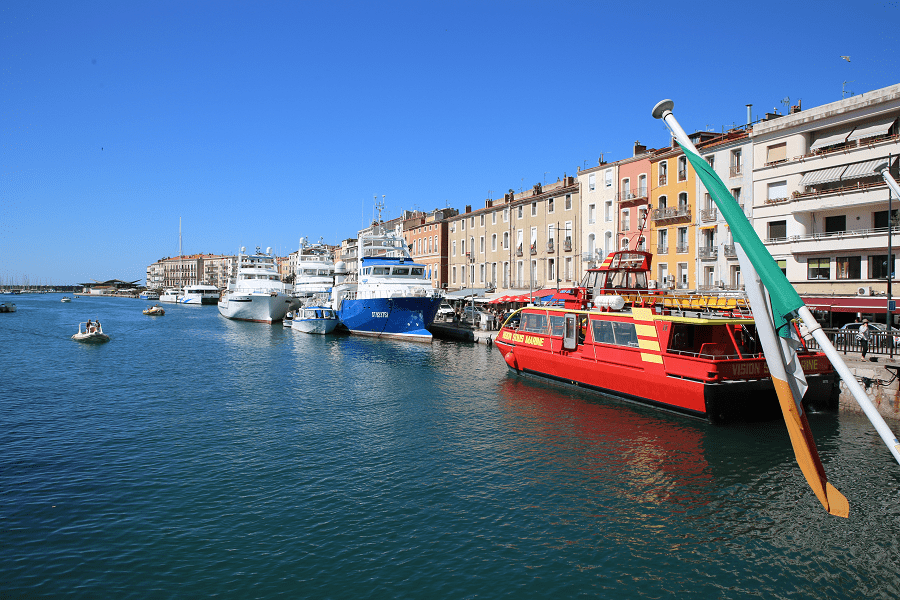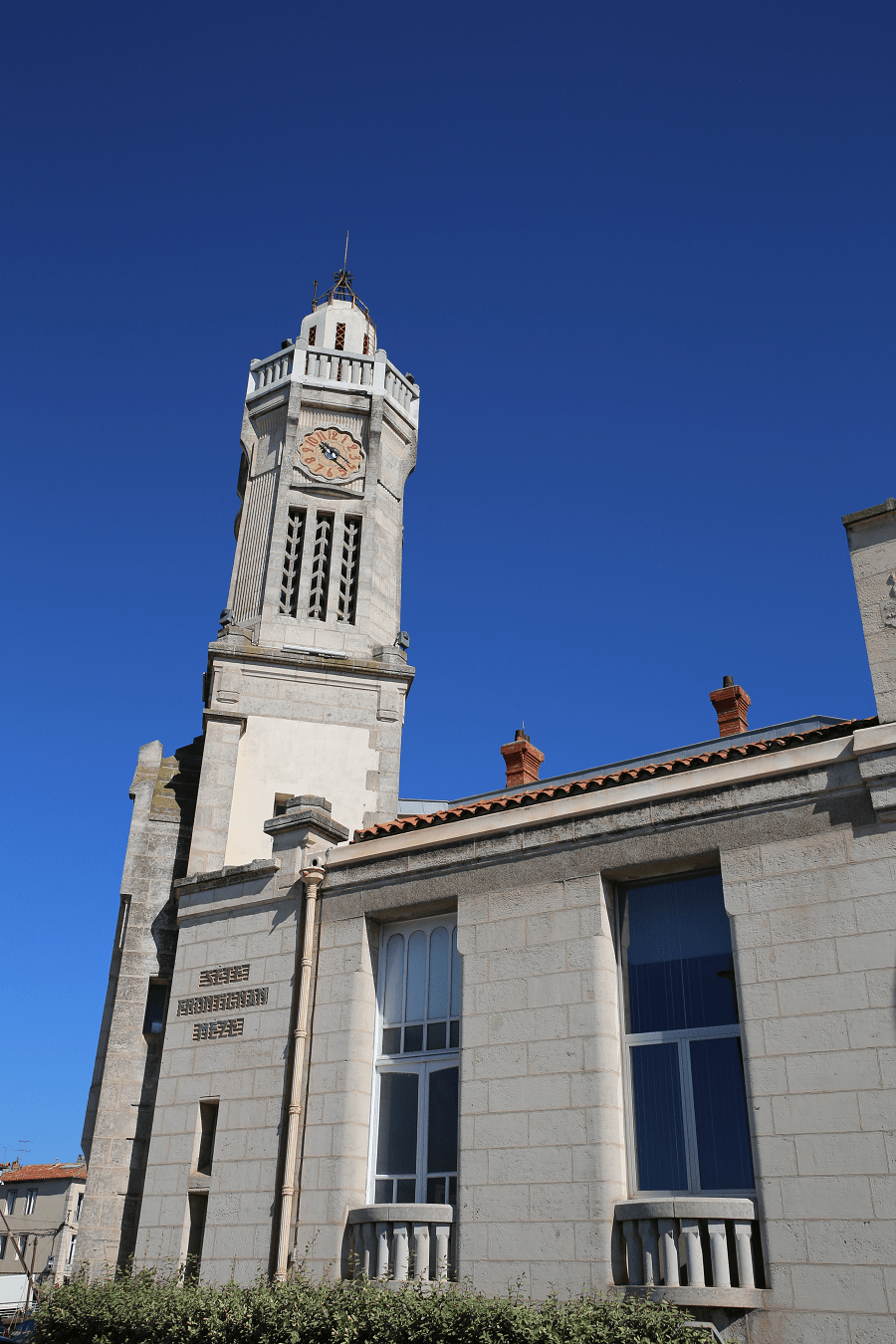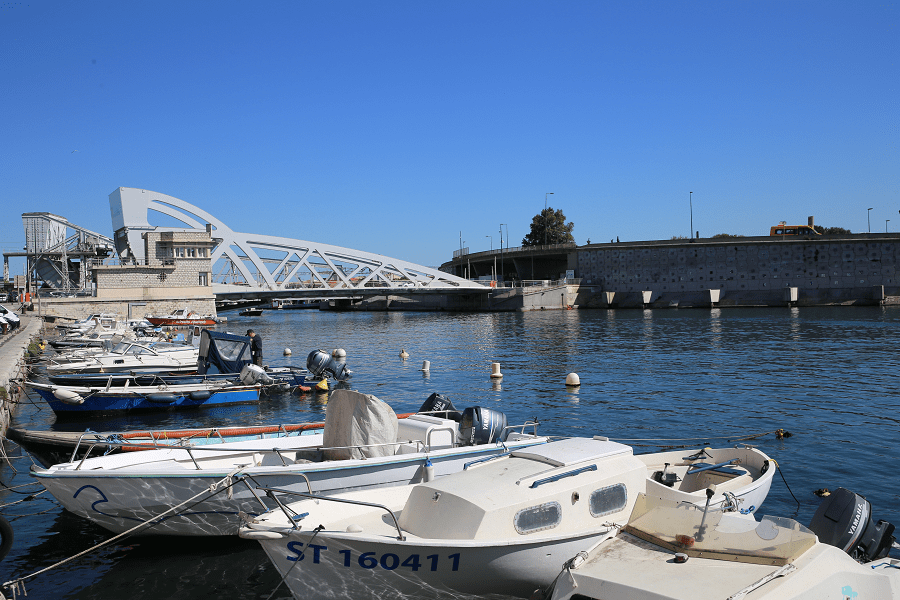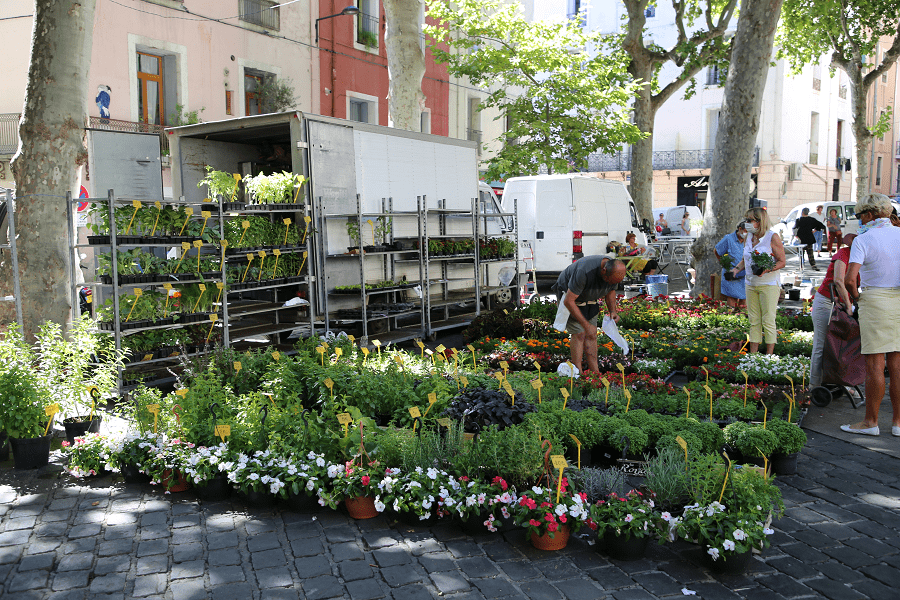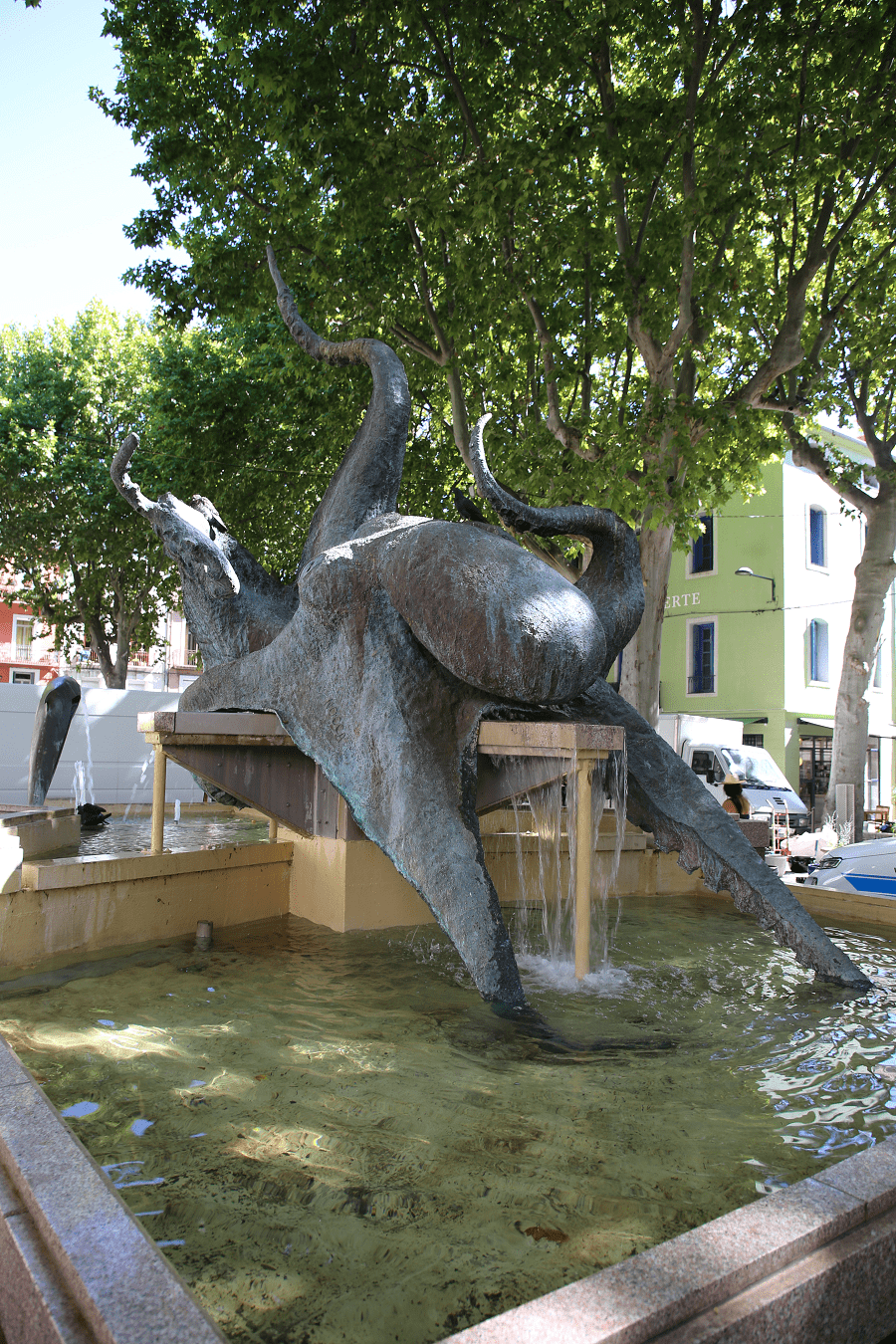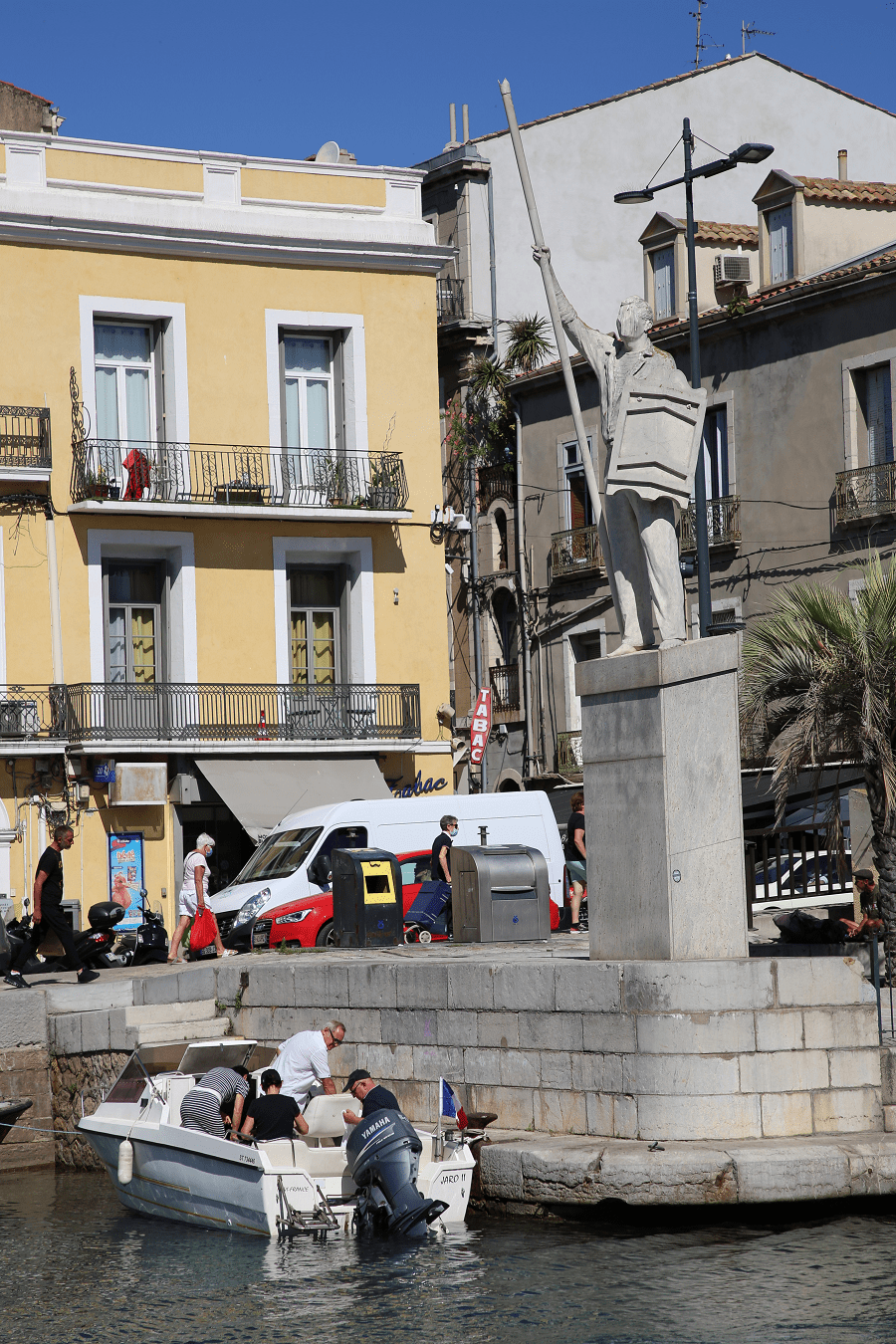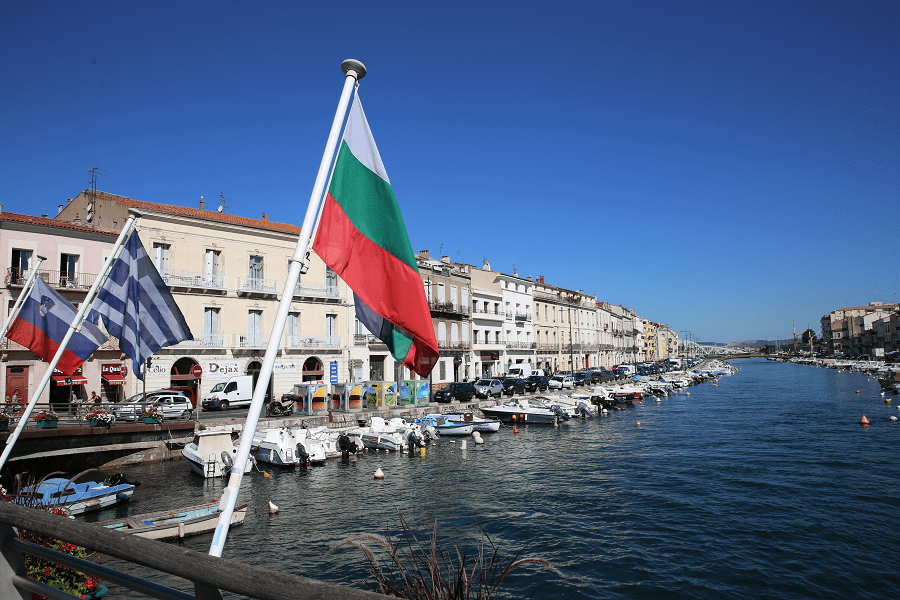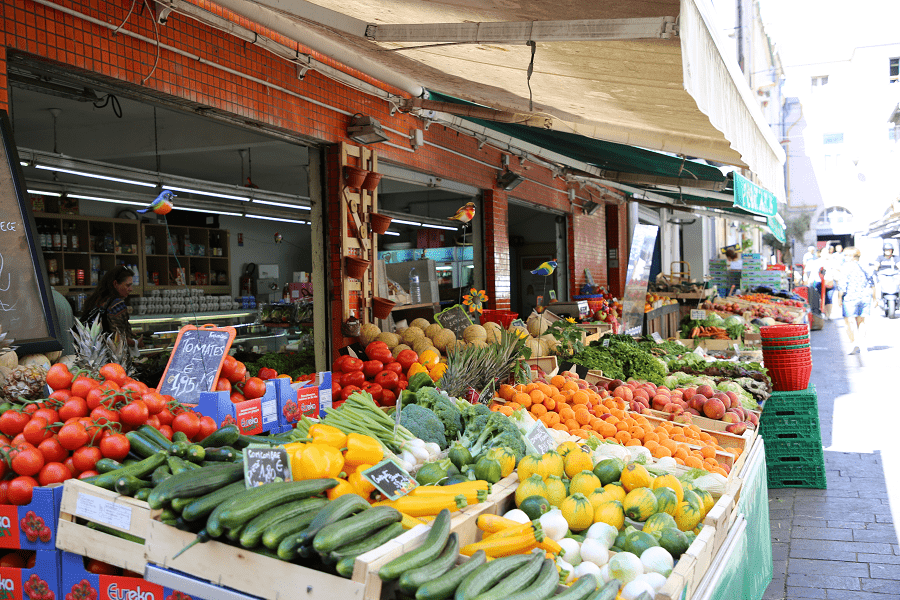Sète (fr. Sète; Occitan: Seta), known as Cette until 1928, is a commune in the Hérault department in the region of Occitania in southern France. Its inhabitants are called Sétois.
It’s a popular part of the Amethyst Coast of the Mediterranean resorts of France.
Built upon and around Mont St. Clair, Sète is situated on the south-eastern end of the Étang de Thau, an enclosed saltwater lake used primarily for oyster and mussel fields. To its other side lies the Mediterranean, and the town has a network of canals which are links between the Étang de Thau and the Mediterranean Sea.
It is sometimes nicknamed the “Venice of Languedoc” for its canals. Its particularly privileged location on a promontory, embellished with a coastline of fine sand, contributes to making Sète a popular holiday resort. Finally, its fishing port and its various maritime activities have allowed this city to prosper despite the tough competition from other Mediterranean ports.
History
The city of Sète was born in 1666 by royal decision and the will of three men: Paul Riquet, Louis XIV and the Chevalier de Clerville.
Paul Riquet was looking for an outlet to the Mediterranean for the Canal du Midi, which he had begun to dig. Louis XIV had instructed his minister Colbert to find a harbour for the royal galleys and to create a port for the export of Languedoc products.
Colbert entrusted this task to the Chevalier de Clerville, who identified Cap de Sète as the most appropriate site for the creation of a port.
The population tripled between 1820 and 1870 and urbanization spread towards the Bassin de Thau. The district behind the consular palace (ex CCI) bears witness to this prosperous period.
In the nineteenth century, the port developed thanks to the trade of wine, wood, sulphur, cereals and iron. Sète became the first cooperage port in the world.
In the 1850s, fishermen from Gaeta and Cetara, villages on the Amalfi coast near Naples, left Italy, driven by the need to find a better life: they settled in the South of France, particularly in Sète and Grau du Roi.
In the 1960s, artisanal fishing developed thanks to the arrival of new techniques brought by returnees from North Africa.
Tourism and interesting places
Sète is a very tourist town, especially during the summer period. The tourist office of Sète is part, since 2006, of establishments classified “four stars.”
The list of the main attractions of the city:
- The decanal church of Saint-Louis by the architect Augustin-Charles d’Aviler, at the very end of the 17th century, consecrated in 1703. Its bell tower housed until the early twentieth century two important bells made by Jean Poutingon in 1761. These bells were unfortunately remodeled. The upper floor, a kind of lantern open on its four sides, in iron and zinc, which is accessed by a spiral staircase made of wood, was added in the middle of the 19th century in place of the old, original wrought-iron campanile. It has a third bell dating from 1914. The whole is surmounted by a terrace on which was installed a statue of the Virgin, originally gilded with leaves
- Saint-Pierre church: the bell-tower shelters an important carillon of the XIXth century in the course of restoration
- The Sea Theater (Fort Saint-Pierre)
- Théâtre Molière – National stage of Sète and the Thau basin, Italian theater at the beginning of the 20th century, modeled on the opera-comedy of Montpellier; decorations painted with scenes of the harbor life; important chandelier in the great hall, etc.
- The consular palace, in Art Deco style, is surmounted at its angle by an original bell-tower. Beautiful ironwork of the front door
- Former Dubonnet warehouses (1924) along the canal
- Canal du Midi
- Mont Saint-Clair, which offers a wide panorama from its new belvedere, with nearby
- The chapel of Notre-Dame-de-la-Salette (1861), decorated with numerous frescoes, some of the interior walls of which still include old ex-votos
- The Mont-Saint-Clair lighthouse, listed as a historic monument in 2011
- The Belle Époque bandstand recently restored in the city center
- The White Stones
- Many lighthouses and semaphores from the 19th and 20th centuries
- The marine cemetery with the tombs of Paul Valéry (1871-1945) and Jean Vilar (1912-1971)
- Le Py cemetery (formerly called “cemetery of the poor”) with the tomb of Georges Brassens (1921-1981)
- Espace Georges-Brassens
- The Paul Valéry museum
- The school of fine arts in Sète
- The International Museum of Modest Arts (MIAM)
- The Occitanie Regional Center for Contemporary Art
- The Museum of the Sea
- The redoubt of Pont-Levis (fortification of the 18th century)
Cuisine, food, restaurants
Famous dishes:
- Tielle à la sétoise
- Macaronade
- Brageoles
- Mussels stuffed with Sétoise
- Bourride à la sétoise
- Frescati
- Squid stuffed with Sétoise
- Sétoise cuttlefish rust
There are 4 Michelin list restaurants in the city:
- The Marcel, 5 rue Lazare-Carnot, Sète, Mediterranean Cuisine, Modern Cuisine (1 star)
- L’Arrivage, 13-15 rue André-Portes, Modern Cuisine, Farm to table (1 star)
- Quai 17, 17 quai Maréchal-de-Lattre-de-Tassigny, Modern Cuisine
- Paris Méditerranée, 47 rue Pierre-Semard, Modern Cuisine
Beaches
- Plage du Lazaret, sandy beach with summer lifeguards for supervised swimming
- Plage de la Corniche, swimming, sunbathing, picnicking
- Plage des Quilles, spacious oceanfront retreat featuring a promenade with eateries, rides & other activities.
- Plage du Lido, public beach, good for kids
Shopping
Shopping in Sète is not a priority on the tourist program.
How to get to?
Sète is the eastern starting point of the Canal du Midi, and the ending point of the Canal du Rhône à Sète. Its train station Gare de Sète is approximately 15 minutes by train from Montpellier, and is also served by long-distance trains to Bordeaux, Toulouse, Perpignan Marseille and Paris. Car ferries sail between Sète and Morocco.
Shortest distance by car:
From the nearest French cities:
From Paris (tolls): 8 hr 7 min (765 km) via A71 and A75
From Menton (tolls): 3 h 48 min (385 km) via A8
From Beaulieu-sur-Mer (tolls): 3 h 47 min (372 km) via A8
From Villefranche-sur-Mer (tolls): 3 h 49 min (372 km) via A8
From Nice (tolls): 3 h 33 min (362 km) via A8
From Cagnes-sur-Mer (tolls): 3 h 15 min (343 km) via A8
From Antibes (tolls): 3 h 20 min (339 km) via A8
From Cannes (tolls): 3 h 16 min (327 km) via A8
From Mandelieu-La Napoule (tolls): 2 h 55 min (319 km) via A8
From Fréjus (tolls): 2 h 52 min (296 km) via A8
From Saint-Raphaël (tolls): 2 h 58 min (299 km) via A8
From Sainte-Maxime (tolls): 2 h 54 min (300 km) via A8
From Saint-Tropez (tolls): 3 h 21 min (301 km) via A8
From Cavalaire-sur-Mer (tolls): 3 h 20 min (307 km) via A8
From Toulon (tolls): 2 h 36 min (262 km) via A9
From Aix-en-Provence (tolls): 1 h 58 min (186 km) via A54 and A9
From Nîmes (tolls): 1 h 8 min (93.4 km) via A9
From Marseille (tolls): 2 h 4 min (198 km) via A9
From Avignon (tolls): 1 h 25 min (124 km) via A9
From Montpellier: 46 min (36.6 km) via A9
From Agde: 35 min (23.9 km) via Route de Sète
From Pézenas: 38 min (35.5 km) via D613
From Béziers (tolls): 49 min (57.2 km) via A9
From Perpignan (tolls): 1 h 28 min (142 km) via A9
From Argelès-sur-Mer (tolls): 1 h 47 min (167 km) via A9
From Collioure (tolls): 1 h 51 min (175 km) via A9
From Narbonne (tolls): 56 min (80.5 km) via A9
From La Baule-Escoublac (tolls): 8 h 15 min (888 km) via A62
From Saint-Nazaire (tolls): 8 h 11 min (876 km) via A62
From Nantes (tolls): 7 h 25 min (809 km) via A62
From Saumur (tolls): 6 h 59 min (740 km) via A71 and A75
From Les Sables-d’Olonne (tolls): 7 h 14 min (798 km) via A62
From Cognac (tolls): 5 h 33 min (585 km) via A62 and A61
From Angoulême (tolls): 5 h 29 min (582 km) via A62 and A61
From Eauze (tolls): 3 h 45 min (357 km) via A61
From La Rochelle (tolls): 6 h (646 km) via A62
From Rochefort (tolls): 5 h 38 min (618 km) via A62
From Saintes (tolls): 5 h 19 min (582 km) via A62 and A61
From Arcachon (tolls): 4 h 58 min (524 km) via A62 and A61
From Royan (tolls): 5 h 42 min (586 km) via A62 and A61
From Biarritz (tolls): 4 h 49 min (529 km) via A64 and A61
From Saint-Jean-de-Luz (tolls): 4 h 52 min (535 km) via A64 and A61
From Bayonne (tolls): 4 h 41 min (517 km) via A64 and A61
From Dax (tolls): 4 h 40 min (496 km) via A64 and A61
From Lourdes (tolls): 3 h 40 min (395 km) via A64 and A61
From Pau (tolls): 3 h 56 min (412 km) via A64 and A61
From Périgueux (tolls): 4 h 45 min (498 km) via A20 and A61
From Bordeaux (tolls): 4 h 29 min (469 km) via A62 and A61
From Toulouse (tolls): 2 h 14 min (227 km) via A61 and A9
From Carcassonne (tolls): 1 h 26 min (136 km) via A61 and A9
From the cities of Europe:
From Monaco (tolls): 3 h 41 min (377 km) via A8
From Andorra (tolls): 3 h 57 min (317 km) via A61
From Barcelona: 3 hr 56 min (333 km) via AP-7 and A9
From Madrid: 9 hr 58 min (938 km) via A-2
From Moscow: 37 hr (3,302 km) via E30/M1
From Belgrade: 17 hr 44 min (1,681 km) via E70
From Istanbul: 28 hr (2,630 km) via E70
From Bern: 6 hr 19 min (635 km) via A1
Main information
Area: 24.2 sq. km
Population: 43 400
Languages: French
Currency: euro
Visa: Schengen
Time: Central European UTC +1
Coordinates: 43°24′19″N 3°41′51″E
See here best sea and ocean resorts of France and Spain (223 objects)
See here Pyrenees travel guide
See here France travel guide
See here Spain travel guide



